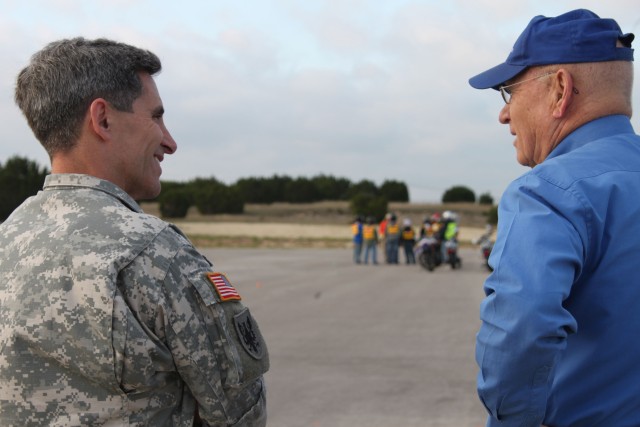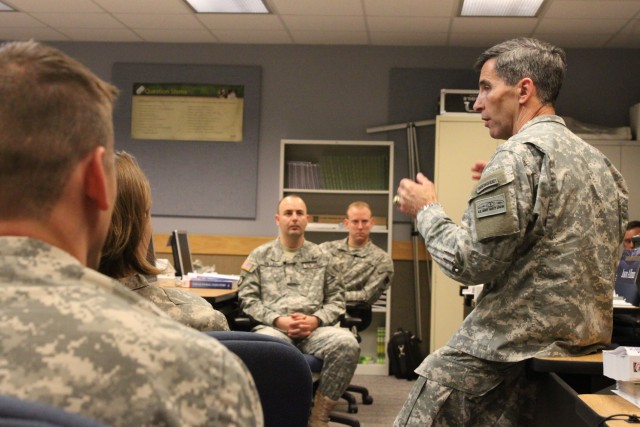FORT HOOD, Texas -- Fort Hood's motorcycle safety initiatives lead the Army in the effort to protect their Soldiers on the roads, according to the commanding general of the U.S. Army Combat Readiness/Safety Center. This is a significant improvement for an installation that once had the highest incidence of motorcycle related deaths in the Army.
During an April 1 visit here, Brig. Gen. William T. Wolf, who also serves as the director of Army Safety, toured Fort Hood's Motorcycle Training Facility on West Fort Hood. The facility is a location all Soldiers and Department of Defense civilians are required to pass through if they want to ride a motorcycle on the installation. Classes are provided for basic riders, experienced riders, sport bike riders and a rider-refresher course.
Wolf commended the facility for its use of motorcycle simulators to help new riders get accustomed to where everything is located on their bike before they actually get on a motorcycle for the first time. He also admired the riding ranges the facility uses to observe riders on their bikes and instruct them on better, safer ways to ride.
Soldiers are encouraged to enjoy the freedom of the road and the enjoyment of the activity, as long as they're doing it safely, Wolf said. He emphasized that there is leadership, friends and, most of all, family who want motorcyclists to ride and come home safely.
Fort Hood's leadership pushing the importance of road safety down to their Soldiers is the cornerstone of the installation's successful program, Wolf said. By implementing and utilizing the "gold standard" of motorcycle training, Fort Hood has set the standard for motorcycle safety Army-wide, he added.
While the basic rider course is the same course provided by off-post instructors, as mandated by the Motorcycle Safety Foundation, Fort Hood's use of simulators and their additional courses set them apart from their civilian counterparts, said Rick Mayr, an instructor at the post motorcycle training facility.
But, even more important than giving motorcyclists advice or instruction, the instructor said, is getting them to understand what they sign on for when they get on their bike.
"We try and instill upon them a sense of responsibility," Mayr said, noting that while riders can't control the actions of others on the road, they can control their own actions and prevent accidents. "With all the instruction, advice or experience we can give them, it's the way an individual acts on their bike that's key."






Social Sharing